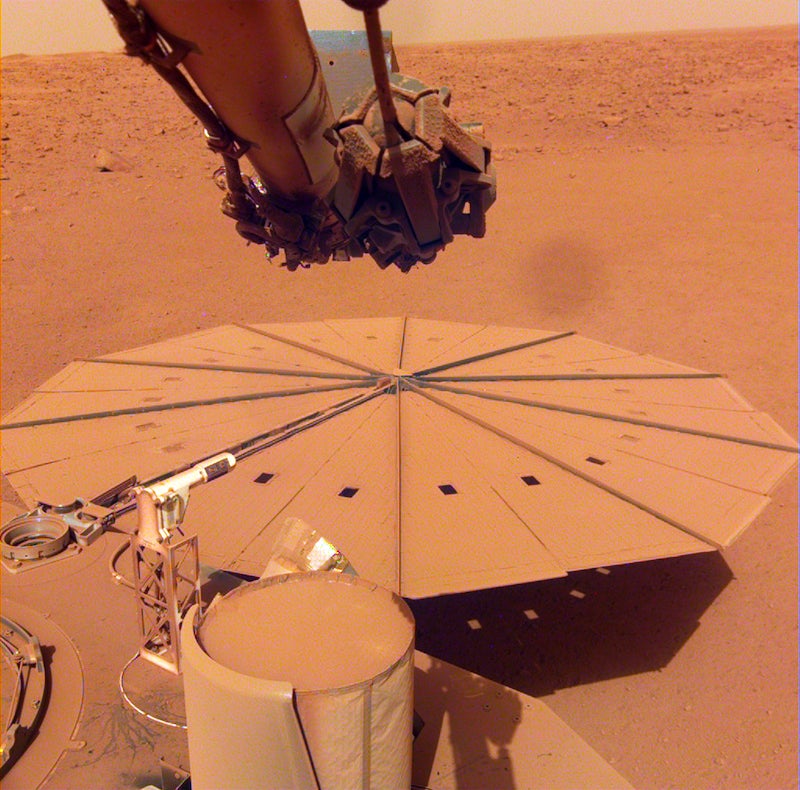
Inevitably, Mars rovers or landers get covered with dust and the solar panels no longer function, ending the mission. Why doesn’t NASA build in a mechanism to clean the solar panels?
Mike Hunnicutt
Woodridge, Illinois
This is a great question and to me, at least, the answer is not at all obvious.
It’s not that NASA engineers can’t design a brush or a wiper or an air-blasting system to clean dust off solar panels or other Mars rover or lander parts — that kind of engineering isn’t rocket science! The issue really is about the constraints on deep-space missions; many engineers refer to these constraints as the “resource box.” That is, all missions are constrained to fit into a metaphorical box defined by resources like mass, physical dimensions, power, schedule, data volume, and cost. The size of the box depends on many factors, like which rocket will launch the mission and what budget is available to the team. And while the resources can be moved around and traded inside the box, the whole system can’t go “out of the box.”
So, for example, if a team wants to add a dust wiper blade to a rover solar panel, the engineers will say, “Sure, we can do that! But what do you want to trade to accommodate the mass, volume, power needs, and cost of that wiper system?” Hmm… Would the team be OK, for example, trading a backup radio transmitter for that wiper system? Or dropping one of the science instruments for it? In my experience, we’ve decided not to make such trades because we felt confident that the rovers could survive their required minimum lifetime even with dusty solar panels. And, while debatable, to most of us involved that appears to have been an acceptable trade for missions like Spirit, Opportunity, Insight, and others.
We often hear about people or groups being praised for thinking “outside the box.” But in deep-space mission systems engineering, the key is actually to try to maximize science while staying inside the (resource) box!
Jim Bell
Principal Investigator for Mars 2020 Mastcam-Z, Deputy Principal Investigator for Science for Mars Science Laboratory Mastcam, Arizona State University, Tempe, Arizona









